Precision breeding: a new era of plant genetic improvement
By Claudio Brondani (Embrapa Rice and Beans) and Rafael Tassinari Resende (Federal University of Goiás)
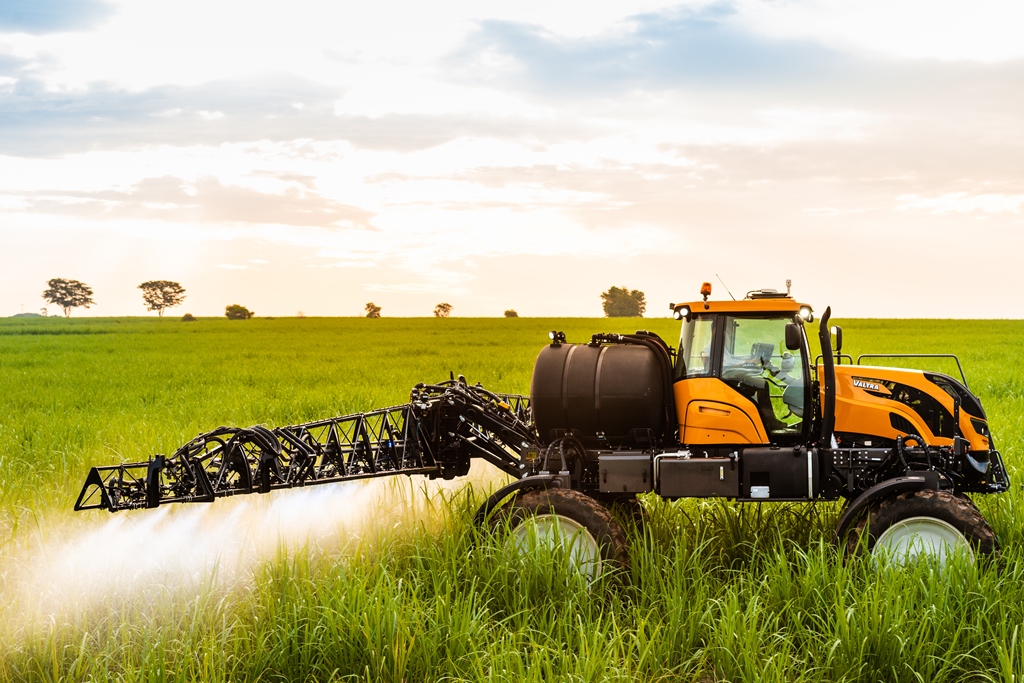
In recent years, self-propelled sprayers have acquired enormous importance in Brazilian agriculture. This equipment appeared in the country in the early 2000s, firstly through the import of North American models and then national production developed, which became very consistent. Currently, there are several manufacturers that produce equipment, with different levels of technology.
The Valtra line of self-propelled sprayers began offering on the national market in 2011 with the BS line and at Agrishow 2023 it launched the R Series, with two models, R530 and R535, class 3.
These models are manufactured entirely at the Valtra factory, in Mogi das Cruzes, in the Metropolitan Region of São Paulo. The model designation indicates that the R5 refers to the current generation and the number 30 indicates that the syrup tank is three thousand liters, just as 35 corresponds to the model that has 3.500 liters of capacity.
The two models in the series are the same in most components, only differing in the capacity of the syrup tank, therefore the chassis is identical and called Flex Frame. Built on type C steel beams, it uses the majority of fixing points via bolted joints, reducing the fatigue of the welded material and, therefore, eliminating structure breakage, so common in competing equipment that uses welded joints.
Due to the structure of the equipment, to the left of the cabin there is a platform for access to it and also to all parts where an approach is required, such as the tank. To access this platform, a ladder was mounted at the front of the vehicle and although it has two fixed steps, it has four retractable ones, which allow it to be retracted during transport and operation.
Analyzing the distribution of the components in the structure, it can be seen that the engine is placed on the front axle, the cabin is perfectly centered, in the distance between the two axles, the syrup tank is positioned behind the cabin and a little in front of the rear axle, while the application bar is behind the plane of the rear axle, configuring a 60/40 distribution, with the tank full and the bar open.
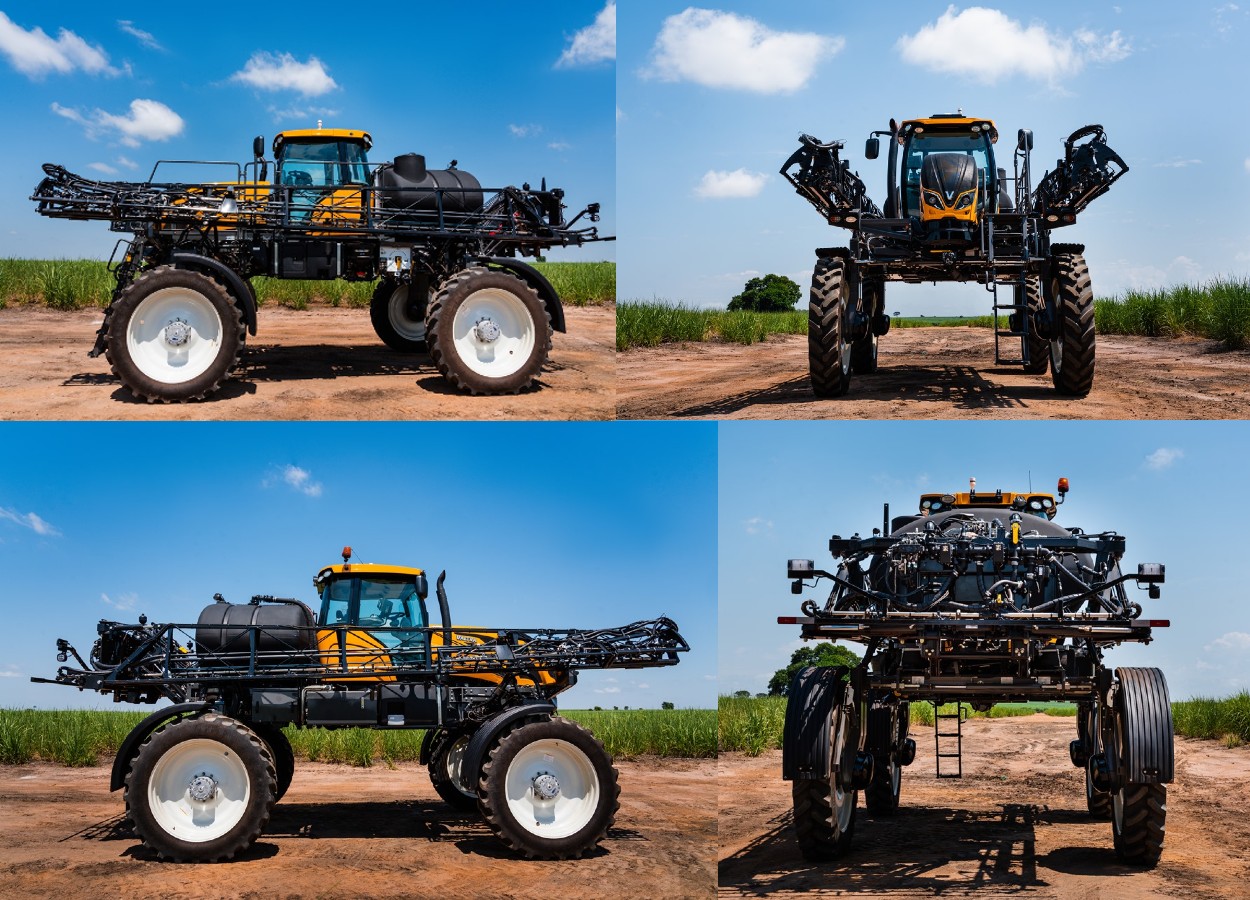
Due to the high operational and transport speeds of this type of equipment, the manufacturer equipped the machine with an independent, active pneumatic suspension with stabilizer bars. In this suspension, the front and rear axles are interconnected, where pneumatic bags are placed on the axles, accompanied by stabilizer bars. This alternative positioning of the bags increases the stability and comfort of the set, as a better option to those competing models that use bags close to the wheelsets.
The wheelsets are placed at the end of the vertical columns that provide adequate clearance for equipment like this. In the R series, radial structure tires in specification 380/90R46 are used on both axles. To adapt to the different situations in which the sprayer is applied, there is a gauge adjustment system, which goes from a minimum of 2,8 meters (m) to a maximum measurement of 3,4 m from the support surface. This gauge change system is operated hydraulically and can be done from inside the cab by the operator. The free span is 1,65 m.
As the self-propelled sprayer is a vehicle, in the strict sense of the word, developing speeds of 32 kilometers per hour (km/h) in application and up to 45 km/h in transport, the braking system is hydraulic by means of hydrostatic pressure, therefore joystick command.
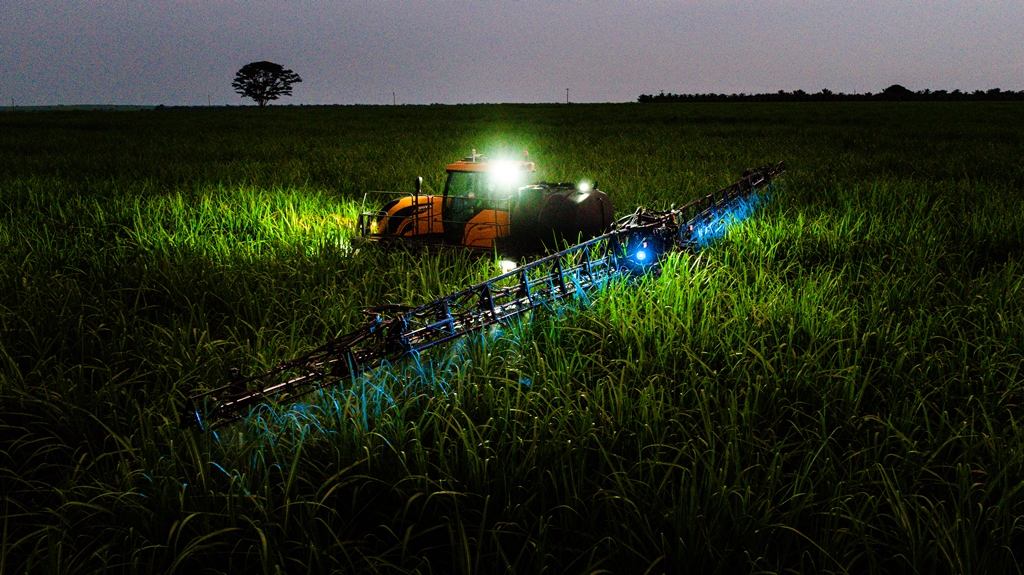
A point to highlight in this equipment is the operator's station. Through a ladder with automatic extension and retraction, access is made to a platform that leads to the large cabin, with a glass area of 5,7 m² and protected from vibrations by means of a suspension based on four rubber damping cushions. Inside the cabin there is a pneumatic seat, with a right-hand side console, integrated into the seat itself and where most of the controls are located. On the left side of the seat, a bench was placed for the companion, generally used for instruction and training. The air conditioning system is hot and cold and the air filtered into the cabin is done by an activated carbon filter. In front of the operator, the steering wheel is height and depth adjustable. Also for the operator's comfort, a radio system with speakers was installed.
Still as a standard item in these two models, a compressed air intake and a lighting system were installed, with eight LED headlights on the top of the cab and two blue LED headlights to visualize the work of the application bar.

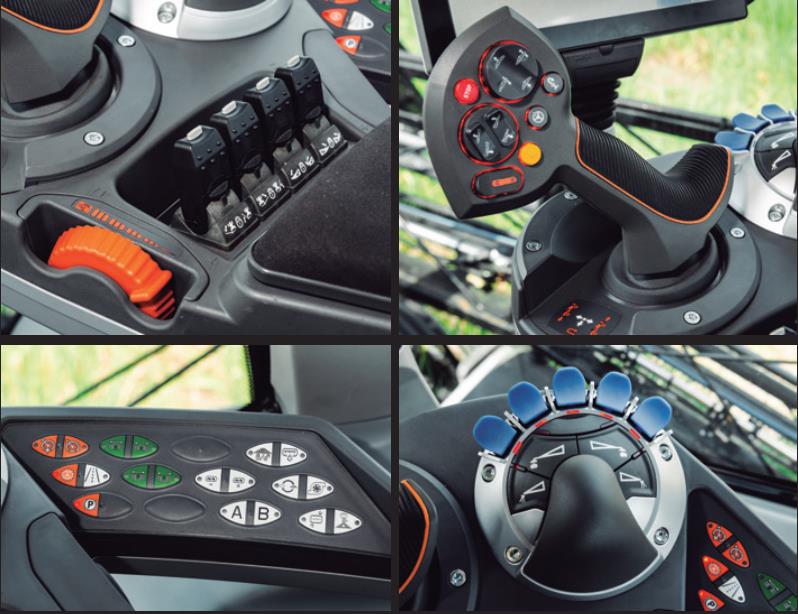
The engine that powers this series is the AGCO Power, model 66CW3, with six cylinders, with a volume of 6.600 cubic centimeters (cm3), turbocharged and with electronic fuel injection management. With this configuration, it meets the pollutant emission limits required by Proconve MAR-1 and also the Tier 3 protocol.
In terms of performance, this engine provides 155 kilowatts (kW) or 210 horsepower (hp) of maximum power, at a nominal speed of 1.900 revolutions per minute (rpm) and a maximum torque of 790 nanometers (Nm) at 1.800 rpm . With this speed regime, it is possible to maintain fuel-saving operation and excellent operational performance. The fuel tank holds up to 350 liters (L) of diesel, enough for a long working day with the consumption rates of this engine.

Both models use a hydrostatic transmission with four-wheel drive and electronic control. From a Danfoss hydraulic piston pump, the oleodynamics takes oil flow to feed the individual hydraulic motors of each wheel, which have an individual reducer. An interesting solution ensures that all oil hoses reach each wheel protected within the axle column.
The AWD Drive Package transmission, which is standard in the R series, consists of a mixed hydraulic and electronic system, which integrates the engine with the transmission, controlling engine rotation and travel speed, in dynamic working conditions. In situations where the equipment must go up and down undulations in the terrain, the speed is maintained by increasing and decreasing the engine rotation, standardizing the amount of product applied. Furthermore, an individual hydrostatic lock can be performed on the wheels, in order to solve grip problems, improving driving and braking. This results in greater fuel economy, greater ability to negotiate slopes, better individual and combined performance of wheel motors and less damage to agricultural soil.
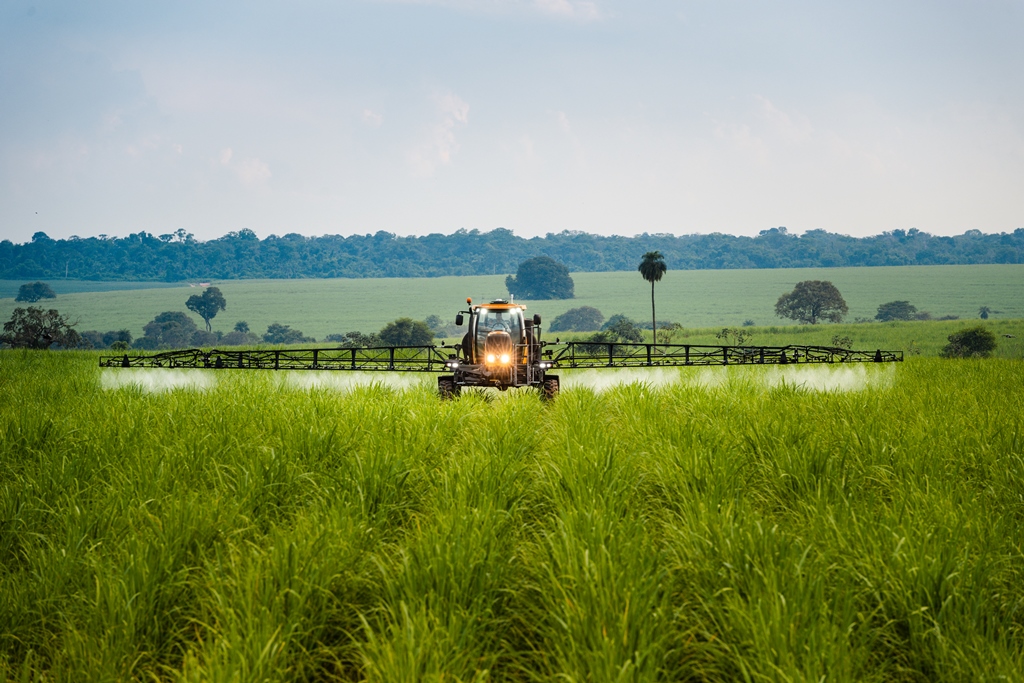
The chemical product application system is controlled by the new Valtra Guide, which integrates, in the same monitor-controller, the autopilot, receivers, climatological station, cameras, control of the flow rate and position of the spray bar and its sections. The monitor is 10,4 inches and is directly linked to the functions that apply to the multifunction control (joystick). It is also possible to change the sensitivity of the multifunction control to adapt comfort and performance according to the characteristics of the operator and the terrain, being able to control the vehicle's acceleration sensitivity, forward and reverse. As there are many functions that can be presented on the monitor, it can be fully configured to present information on the screen in the way the user wants.
The syrup tank, made of polyethylene, has a capacity that varies according to the model, three thousand and 3.500 liters, and an agitation system composed of two hydraulic agitators, with proportional control and a rotating nozzle, for washing the tank. Proportional control means that the agitation speed depends on the volume of syrup in the tank, reducing the foam formed and improving the conditions for applying the product.
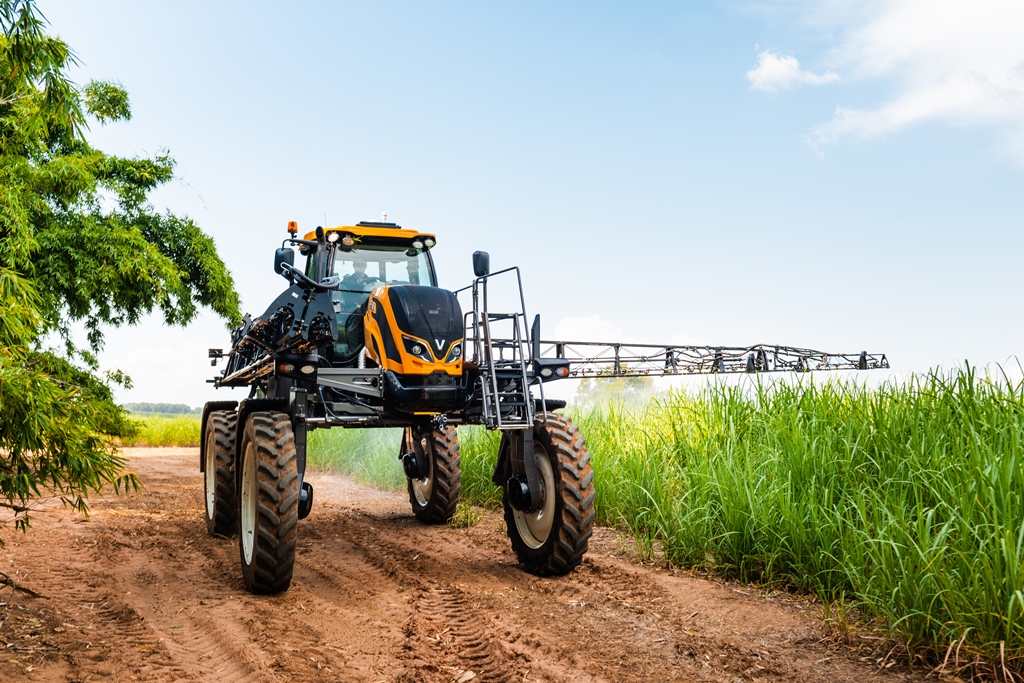
The pumping of the syrup, to generate system pressure, is done by a centrifugal type pump, made of stainless steel, with Forcefield technology, from the Hypro brand, driven by a hydraulic motor. The maximum pump flow can reach 549 liters per minute (L/min). A main filter with a 30 mesh mesh and line filters with an 80 mesh mesh were placed in the pressure line.
Although the system can be filled by the main pump, as an option, the manufacturer offers a centrifugal recharge pump, also from the Hypro brand, made of polyethylene, which speeds up filling, reaching a maximum flow rate of 568 L/min.
The charging station, “standard” for both models, is located on the left side of the vehicle and consists of two inlets, front and side, for water and air outlet, with quick coupling. It has a chemical eductor, made of polyethylene, equipped with a pump independent of the spray system, with capacity for up to 26,5 L of liquid product and which mixes with water or pre-existing syrup, placed in the main tank. To assist with night work, this station has its own lighting. At the recharging station, the desired function is controlled, such as recharging and mixing, controlling this function with a digital panel placed to the left of the main control.
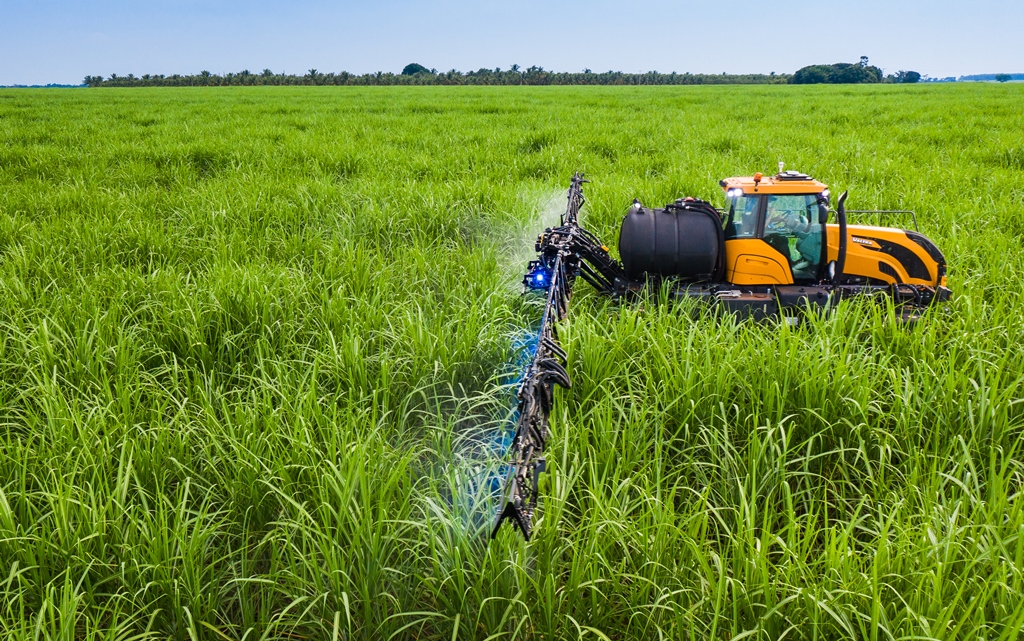
In compliance with regulatory standards, the equipment has a clean water tank, also made of polypropylene, with a capacity of 350 L, dedicated to washing chemical product packaging, and a further 40 L, exclusively for operator hygiene.
As an option, the customer can request the inclusion of a quality item, which is LiquidLogic. This option recovers the product after the end of the application, returning it to the warehouse, reducing product waste, protecting the environment and the people involved in the application. With this system, the product is also recirculated in the application bar, avoiding clogging of nozzles and causing constant homogenization of the syrup throughout the piping. This difference offered by this sprayer is a really useful piece of technology that has been proven to work.
The application bar, placed at the rear of the vehicle, can have lengths ranging from 24 m, 30 m, 32 m and 36 m, depending on the customer's option. The bars will be metal up to 32 m long and when the length reaches 36 m, the final part will be made of aluminum.
The application bar, positioned at the end of a parallelogram connected to the machine chassis, can be divided into nine or 36 sections. The automatic control of the product flow will be electro-pneumatic when the number of sections is equal to 9. It is possible to equip the machine with nine electro-pneumatic sections or 36 sections with electronic control, regardless of the bar size. In other words, it is possible to configure a 30 meter boom, for example, with nine or 36 sections. When the bar is 36 m, there will be 36 sections, that is, the electronic control will be meter by meter. This system will cut off the flow every time it covers an area already applied, which results in product savings and environmental protection.
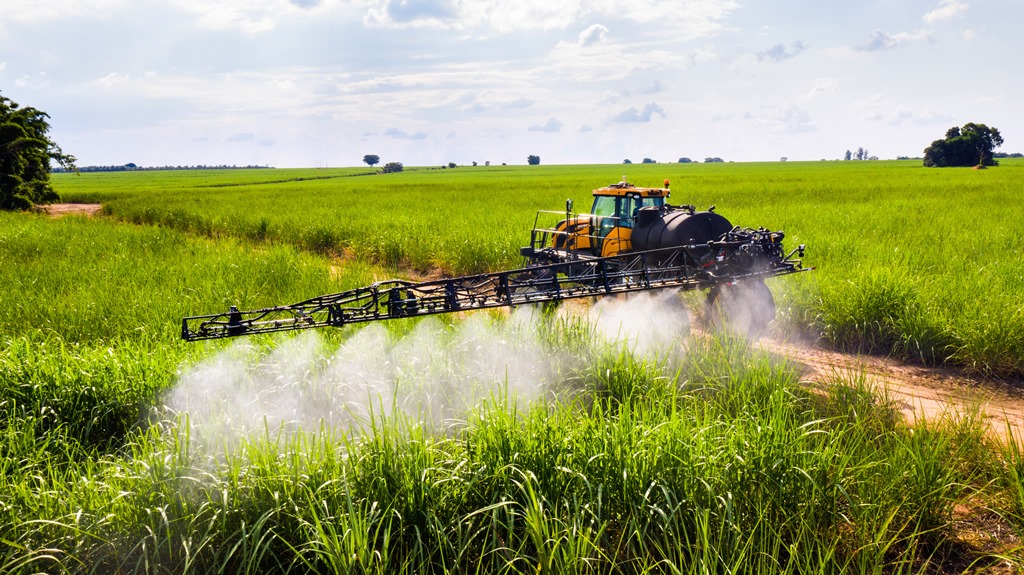
The minimum height of the bar is 32 cm (position 1) or 73 cm (position 2) and the maximum height will be 218 cm in position 1 or 259 cm in position 2. This bar height can be controlled by height sensors bar, in passive or active mode. In passive mode, the bar is only repositioned in a vertical direction, while in active mode the central section controls the rotation movement, mainly used when the slope of the terrain is steep.
The piping through which the product passes is made of stainless steel, with a diameter of one inch, and reaches each of the five-fold nozzle holders with a spacing of 50 cm.

Aside from the technology items present in the sprayer's chemical product application system, as well as those on the vehicle itself, which are state-of-the-art in this type of equipment, we can highlight Valtra's offering Connect, which is a system that connects the machine to a central system provided by the manufacturer and that monitors the machine in real time, called telemetry.
This equipment also offers the possibility of adding up to four cameras and viewing images from different points of the equipment, directly on the machine's main monitor. The autopilot, inserted into the Valtra Guide, uses Novatel or Trimble receivers, depending on the customer's choice.
Also at Valtra Guide it is possible to automate up to 32 sequences and two speeds of headland maneuvers, through the Accufield Command. This provides the operator with comfort and reduces maneuvering time.

Receive the latest agriculture news by email